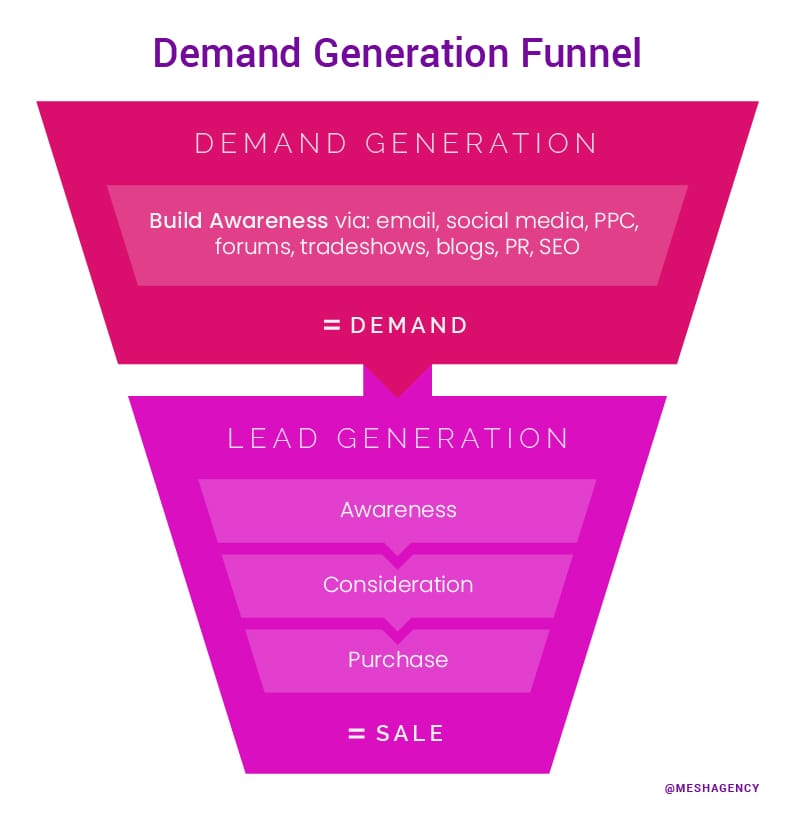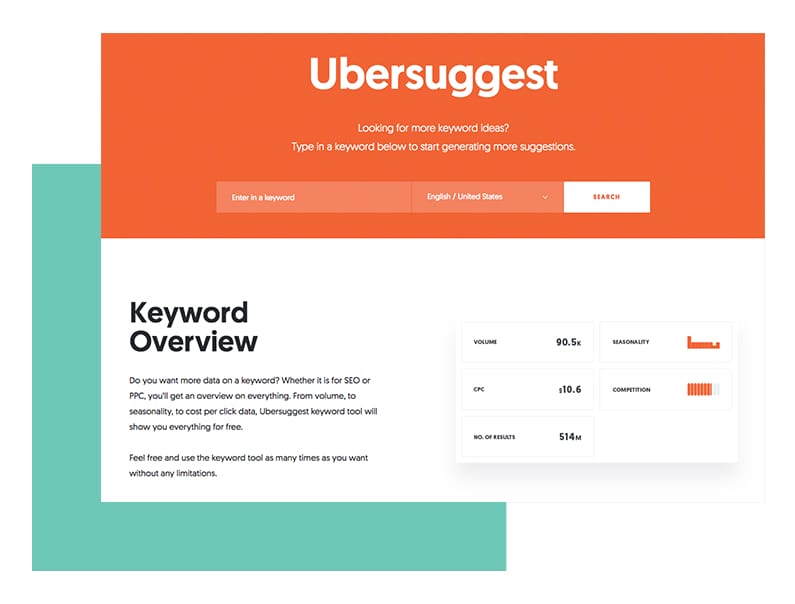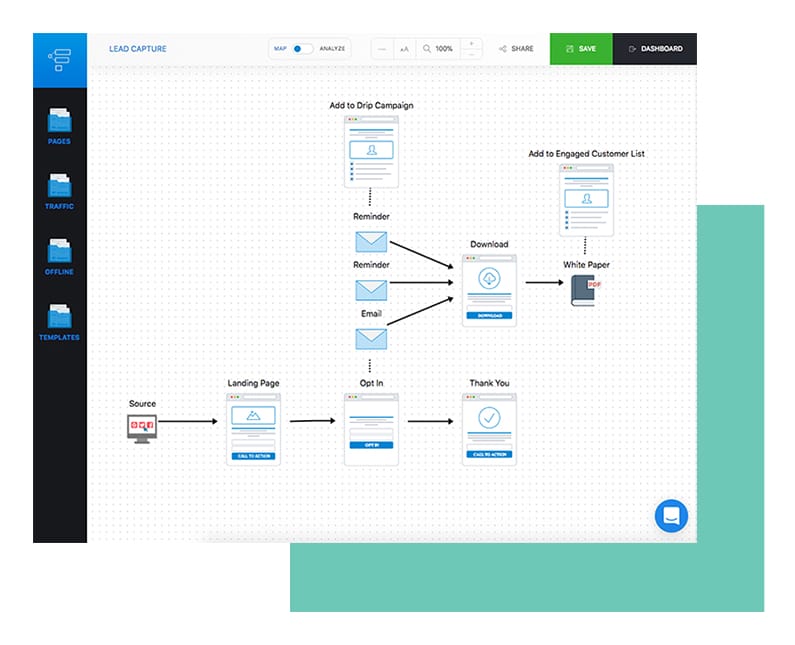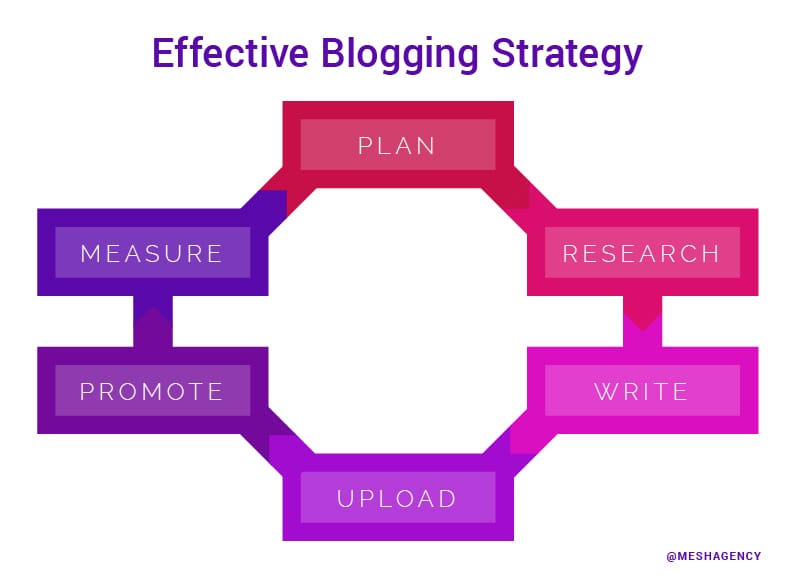Let’s face it: given the glut of content marketing advice pushed out in the last five years you could probably close this window, sit down for a weekend, and write a book or three on creating great content.
However, one concept that some marketing teams still wrestle with is that even the most unique and interesting content in the world can fail to meet the goals of a marketing strategy if it doesn’t find its way in front of the right audience.
This is where your demand generation strategy comes in.
By having a better understanding of what demand generation is (and isn’t), how it differs from lead generation, and how demand generation best practices can be used as part of your B2B Account-Based Marketing (ABM) strategy, you’ll be better equipped for marketing success in 2019 and beyond.
What is Demand Generation?
Not to oversimplify things, but at its core, demand generation is exactly what the term implies: a bunch of strategies used with the ultimate goal of generating or increasing demand for your products or services.
It can be helpful to envision demand generation as a funnel (much like all the other funnels you see associated with ABM).
At the very top, you have identification of audiences.
From there, each step of the demand generation process involves moving to a more narrow point throughout the funnel before reaching the ultimate output of creating demand.
It can also be helpful to think of demand generation in terms of what it isn’t.
One of the biggest misconceptions people have is that demand generation and lead generation are one and the same. While it’s true that both of these strategies can be beneficial from a B2B and AMB standpoint (and some of the tactics used in each may even be the same), there are some key differences between the two.
According to Jane Fleming at LinkedIn, demand generation is “the process of getting people interested in what you have to sell,” whereas “lead generation is the task of turning that interest into names and contact details (leads) that you or your sales teams can follow up with.”
Going off this point, then, the major difference between what you’ll see in a demand generation and lead generation campaign is that in the former, you’re building awareness that you have something of value and interest, while latter, you’ll be collecting contact information for follow-up.
With demand generation best practices, you’re typically focusing on raising awareness of a product or service your company offers and helping your prospective audience see why or how it is valuable, relevant, or helpful to them.
Benefits of a Demand Generation Strategy
It’s almost 2019. Isn’t brand awareness all but dead? And if it’s not dead, does it really apply to me and my Account-Based Marketing efforts?
Simply put, whatever your marketing strategy is—it’s only as successful as its ability to tell your story and convince your audience of your brand’s relevance to their needs.
By having a strong demand generation strategy based on proven best practices in place, you can minimize the costs related to onboarding and obtaining new customers while generating quality leads in the shortest timeframe possible. In turn, you’ll also be able to improve your marketing return on investment.
It’s a win-win from all standpoints.
Demand Generation Best Practices
Now that you have a better understanding of what demand generation is (and what it isn’t), it’s time to explore some demand generation best practices that can be incorporated into your organization’s overall ABM strategy.
1. Provide a Utility
These days, it’s easy to see buyers are always looking for give-aways and free stuff.
As a B2B marketer building an ABM strategy (or campaign) consider providing a utility by developing a free version of a tool that your customer base will find useful.
This tool would ideally be developed specifically for your demand generation campaign and should be some kind of technology that sits at the early stages of your value ladder.
While it might seem a little counterintuitive to give away this kind of powerful technology for free, doing so can help to build a sense of trust between you and your prospects while also building your brand reputation.
And of course, when you give away these kinds of resources for free, you can always request contact information in return (name, email address, etc.) before they’re able to complete the download or use the tool.
From there, you’ve killed two birds with one stone by generating a new lead and starting your prospective customers along a path to buying from you.
2. Provide a Free, Value-Added Resource
Along the same lines of offering a free utility to your target audience, you might also consider offering a free value-added resource on your company’s website.
This is generally manifested in the form of some sort of gated (or preferably un-gated) content that offers potential clients just enough to get them interested, but doesn’t give away any of your actual services or products for free.
At the same time, since you’ll be collecting contact information (such as email) as part of the gate-keeping process, you’ll want to make sure that the content you’re giving away (whether it be an on-site tool or interactive Account-Based Marketing infographic) is useful enough to your audience to proceed.
Keep in mind here and when developing some kind of tool that you may need to invest a little money, especially if you need to hire an outside resource for the job. However, the costs associated with these demand generation practices should absolutely pay off in the long run.
3. Determine Your Buyer’s Persona
Have you really taken the time to carefully outline your buyer persona yet? If not, then all your demand generation efforts might as well be pointless.
Determining your buyer persona means figuring out exactly who you’re aiming to sell to. Only from there can you begin to develop and frame your content in such a way that you can articulate how your products or services will help solve your audience’s problem.
And of course, once you have a buyer persona carefully outlined, you can also use this information to map out your buyer’s journeys.
There are many tips worth keeping in mind as you begin developing buyer personas. Consider, for example:
- Reviewing your current contacts to uncover trends about certain leads.
- Speaking with your sales team to find out more about your customer base.
- Interviewing customers directly over the phone about your products/services.
4. Utilize Marketing Automation/CRM Platforms
If you’re not leveraging existing technology to do some of the work of your demand generation campaign in 2018, you’re missing out on the benefits of automation.
Utilizing marketing automation and CRM platforms is a great way to make the most of your demand generation campaign. Specifically, these kinds of tools can help you effortlessly tailor your content to specific audiences before they even give you any of their contact information.
These platforms can also help to tell you what level of awareness users are at when it comes to your brand’s products and services. This, in turn, can help you avoid making “rookie” marketing mistakes, such as sending out cold emails to people who are already leads.
There are plenty of useful and popular demand generation/CRM tools available today, including:
- Salesforce
- HubSpot CRM (which we actually took the time to thoroughly compare to Salesforce, for your convenience)
- Trello Project Management
- DemandBase
- Marketo
- And many more.
5. Leverage Lead Scoring
In 2017, about 70% of organizations in the United States listed lead conversion as a top priority from a marketing standpoint. However, it’s difficult to convert a lead if you don’t have a quality lead to begin with.
This is where a strategy known as lead scoring can come into play.
Specifically, lead scoring lets you know if your viewers are actually interested enough in your brand to consider them a real lead versus when you may need to show them more content or nurture/reach out to them in order to complete the sale/conversion.
There are many different strategies that can be used to build a lead score, so you’ll want to explore your options and determine which strategy ultimately works best for your organization. Some of the most common data used in lead scoring includes:
- demographic information
- online behavior
- company information (where applicable)
- social media activity
- email engagement
With accurate lead scores, you’ll be able to make better informed marketing decisions as to work toward more conversions
6. Take Advantage of Email
If you think email is overrated when it comes to its relevance and success in a demand generation campaign, think again.
In fact, one study found that for every single dollar spent on email marketing, organizations saw as much as a $38 return on investment. In another study, 79% of B2B marketers cited email as the single most effective distribution channel for demand generation.
The key to using email successfully as part of your demand generation campaign is to make sure you’re using it correctly; unfortunately, there are a lot of “wrong” ways to use email in this regard. For example, you don’t want to just send out random email blasts.
Instead, make sure you’re actually offering your audience something of value through the use of drip campaigns and lead nurturing.
Developing your buyer’s journey and subsequent value ladder alongside your marketing automation software will be extremely helpful here—it will allow you to deliver the right content at the right time, and drastically reduce your rate of unsubscribes.
7. Set Up Analytics For Tracking
How will you know what’s working versus what’s not working in your demand generation campaign if you’re not utilizing any kind of analytics or tracking strategies?
Be sure to set up analytics to track your process along the way. This will help you figure out which campaigns are successful versus which are no longer worth your investment or need some fine-tuning in order to be successful.
When looking for analytics and tracking software, look specifically for options that will allow you to monitor your website traffic, landing pages, and downloads. You should be able to see a detailed breakdown of where your traffic is coming from and what activity is taking place.
Once you have the data you need, you can learn from it and adapt your demand generation practices accordingly.
There are many analytics programs these days that will make your life easier by generating reports automatically for you. This saves you the time and hassle of trying to identify trends and otherwise interpret the data yourself.
Some social media platforms even have their own analytics software that you can use when you spend money marketing with them.
8. Don’t Underestimate the Power of Content Marketing
Okay, so you’ve heard the adage “content is king” more times than you’d like to admit (we won’t pretend we didn’t open this blog post with it), but it’s just so true.
Content creation has been, and probably always will be, the key to successful marketing.
Of course, with nearly two million blog posts written and published every single day, it can be difficult to get your content to stand out among the rest.
This is where it can be helpful to have a solid content marketing plan in place that sets your brand apart from the rest.
Even if you already have a blog that you’re updating with new content on a regular basis, it’s a good idea to revisit your blogging strategy.
Are you really saying anything new and interesting in your blog posts, or are you covering the same topics that have already been overdone? Finding new ways to approach blog topics and incorporating original data will keep your readers interested and generate more buzz.
Above all else, remember that quality content is always better than quantity. In other words, you’re better off having a handful of well-performing blog posts than dozens of mediocre ones.
Some content marketing tips to keep in mind:
- Always consider SEO while writing.
- Make sure your blog is mobile-friendly.
- Keep it extremely relevant and useful.
- Don’t forget about organic search!
9. Use Social Media
If you’re not harnessing the full power of social media as part of your demand generation strategy, you could really be missing out.
After all, one study found that about 71% of consumers make purchases based on social media references. Furthermore, another study found that 33% of the “Best in Class” companies utilize social media data as part of their marketing strategies.
While its use is often disregarded as a B2C tactic, social media can be just as successful from a B2B standpoint when used properly.
This is especially true when it comes to social media platforms such as LinkedIn, which are now bigger than ever for B2B sales and marketing. On these platforms, be sure to publish and share new content regularly, and take other steps to optimize your profile on LinkedIn for ABM.
Furthermore, take time every so often to keep your company profiles updated and join related industry groups.
10. Attend Industry Trade Shows
Looking for a way to literally put your brand in front of your target audience? Consider attending an industry trade show if you haven’t already!
This is a great way to get the word about your brand out there while also meeting some prospective leads in a unique face-to-face environment.
Who knows? You might even be able to close a deal on-the-spot, as many people attend an industry trade show with the intention to do business.
11. Get Referrals
These days, your current and past clients can be a huge source of demand generation, so take advantage of this whenever possible!
If you have any current or past clients with which you have a great working relationship, why not ask them to promote you in a way that will help with your demand generation campaign?
Some clients may be willing to do this for nothing in exchange, though you may want to sweeten the deal by offering some kind of rewards program or similar incentive for any referred clients they bring your way. Just be sure to never “bribe” clients for good reviews or recommendations—there’s a difference between kindly asking or offering referral credits of some kind, and offering straight cash.
Any way you go about it, referrals can help to better establish your brand’s reputation while also spreading awareness of your products and services. It’s another win-win!
12. Have a Well-Thought-Out Plan
When it comes to formulating your demand generation strategy, you can use any or all of these best practices for success.
However, none of it really matters if you don’t have a carefully thought out and strategic marketing plan in place.
You cannot expect to simply use some of these best practices randomly with the hopes that things will work out in your favor. You must carefully plan, time, and execute your demand generation strategy while also making sure that everyone on your team is on-board and well informed. This includes not just members of your marketing team, but your sales staff as well.
13. Have a Specific Purpose
Furthermore, you can’t expect to generate demand for something out of thin air.
The whole purpose of a demand generation campaign is to identify the demand for your products and/or services and then help your target audience see the need for it.
If the demand for your goods or services really isn’t there, or if your goods/services are not actually solving a real problem that exists, none of these best practices are going to do you any good.
This is where having a specific purpose from the very beginning is so important, as you don’t want to waste any of your marketing dollars or your marketing/sales teams’ time.
Overall, demand generation best practices should be carefully incorporated into any marketing campaign for the best chances of success, no matter what industry you may find yourself in.
By utilizing strategies such as taking advantage of social media and email, as well as using analytics tools and knowing your audience, you can optimize your marketing return on investment while taking your business to new heights.
Get Help From a Marketing Agency
As you begin to work these demand generation best practices into your marketing strategy, keep in mind, demand generation success is dependent on your ability to understand and connect with your target audience in a meaningful and purposeful way.
If you need guidance defining your target audience and their needs, ask about our persona development consultation. Call us to get started today at 844.432.8987 or leave a message via our chat.
Marketing Agency
MESH is a digital marketing agency that has pioneered Account-Based Marketing via our proprietary Outcome Driven Marketing (ODM) methodology. We keep our focus on tightly integrating (or MESHing) lead generation, inbound, and outbound methodologies. We help you understand the hidden levers that impact your customers’ buying decision process, develop the right marketing strategy for your unique business case, and effectively execute and measure all aspects of your Account-Based Marketing program.















